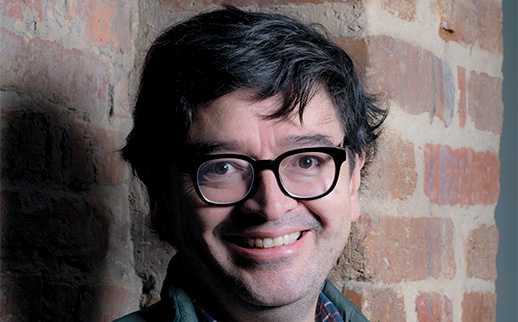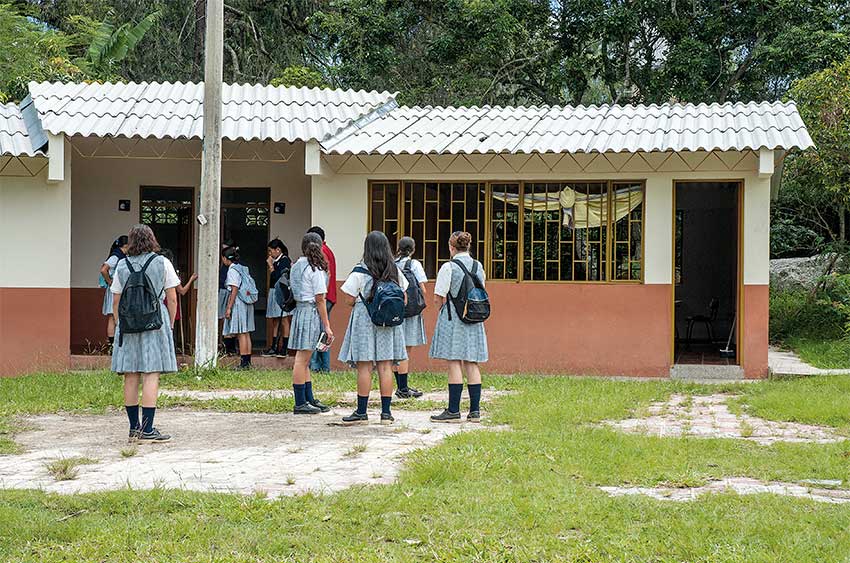Rumors leading to a criminal life: Impact on school dropout rate
By: Stefany Hernández
Photos: Alberto Sierra, Milagro Castro
Society and Culture

By: Stefany Hernández
Photos: Alberto Sierra, Milagro Castro
For American economist Gary Becker, criminality is considered a trade with a cost and a benefit: the cost is the expected legal consequences it may bring, and the benefit is perceived as the profit received by offenders. This theory argues that the person who initiates his criminal life has knowledge and understanding of their actions, the goal of which is to improve their individual welfare.
In this context, Darwin Cortés, Economist and Professor at Universidad del Rosario and co-author of academic paper Crime and Education in a Model of Information Transmission, published in Annals of Public and Cooperative Economics, asserts that criminality has different social elements that influence decision making when starting out in this trade. One of these is the rumors about how beneficial crime is.
According to this case study on high school students, a criminal can convince them that “the trade” is profitable without the need to justify the type of crime they are being asked to commit.
“What we are assuming is that at the beginning, all young people are in school and may eventually receive information about criminal life,” explains Professor Cortés. “If that happens, it is because they learn that there are people who are engaged in this activity,” he continues.

The novelty from a theoretical point of view is that we apply a mathematical model of how rumors spread, and we consider and study them as a form of 'viral' transmission of information, exactly like the spread of any virus," explains Darwin Cortés, a researcher of the Faculty of Economics at Universidad del Rosario.
Thus, the question that students ask themselves is as follows: Does crime pay? When young people first encounter a criminal, they ask themselves how profitable can crime be. “If that encounter happens when the student has just heard the rumor, it would indicate that crime does generate a benefit for them. If that encounter occurs later, it may pay little or not at all. The student uses that decision to leave school or continue studying,” explains Cortés.
The aim of this research was to contribute to the economic analysis of crime by Economist Gary Becker by applying the economics of rumor by Indian economist Abhijit Banerjee. To such end, a generalized theoretical model was built based on what can occur in the decision-making process of high school students and the profitability of criminal life.
The study was also conducted by authors Guido Friebel, from Goethe University in Germany, and Darío Maldonado, from Universidad de los Andes.
Banerjee’s model indicates that each individual makes decisions based on the opinions or rumors of others, as long as they lead to personal gain. This, in other words, is known as the “herd model.” Professor Cortés states, “The novelty from a theoretical point of view is that we apply a mathematical model of how rumors spread, and we consider and study them as a form of ‘viral’ transmission of information, just like the spread of any virus.”
To this end, three scenarios were evaluated in which both academically successful and underachieving students were faced with the decision to either drop out of school and start a life of crime or continue learning, depending on the profitability of both activities.
In the first scenario, a criminal life is not beneficial to either group. In this case, the speed with which the rumor spreads is null and there is no increase in the crime rate.
In the second scenario, criminal life is beneficial for some but not for others. The speed at which the rumor spreads is medium, and it affects students with poor academic performance over those with good grades.
In the third scenario, crime does pay, the rumor spreads quickly and affects both students with good and bad grades.

In addition to examining the speed at which rumors spread, the study simulated a situation in which studying was more profitable than criminality by convening free education programs based on meritocracy and students' good academic performance.
In addition to examining the speed at which rumors spread, the study simulated a situation in which studying was more profitable than criminality by referring to free education programs based on meritocracy and good academic performance. The researchers then analyzed how the hypothetical context influenced the decision to drop out of school and engage in criminal life.
The analysis based on the applied statistical model concluded that in this situation, the speed of rumor spread in the aforementioned three scenarios dropped. However, this does not rule out the possibility that students become criminals, especially those with low academic performance.
For Professor Cortés, the dilemma is to try to show that a policy that targets a certain population can affect those who fail to meet its premises. “For example, in Colombia, the program called Ser Pilo Paga—no longer effective—was a case of public policy that meets these meritocracy requirements and could be a subject of study to know what really happens to those who were not qualified to be part of it.”
Moreover, Professor Cortés considers that for a public policy to be successful in encouraging young people to continue with their studies based on academic performance, it is important to draft, at the same time, other public policies that follow up on underachieving students to reduce the dropout rate since there are other factors, besides lack of motivation, that lead to student dropout, such as teenage pregnancy, drug use, and child labor, among others.

Researchers evaluated three scenarios in which both academically successful and underachieving students were faced with the decision to either drop out of school and start a life of crime or continue studying and learning depending on the profitability of both activities.
In this case study on high school students, a criminal can convince them that “the trade” is profitable without the need to justify the kind of crime they are being asked to commit.
The study by researchers of Universidad del Rosario builds a theory that compares two life projects. One that is not risky but whose costs take time to recover; this is the case of education, which involves a very high investment of time, money, and learning. The other one is crime, a much riskier project but that offers “benefits” of a certain type more quickly than education.
The report called School dropout in Colombia in 2021 published by the Ministry of National Education indicates that school dropout rate in 2021 stood at 3.58%, and secondary school has the highest dropout rate. The main reasons, according to the students surveyed, are lack of interest, the need to work, and the scarcity of economic resources to carry on with academic activities.